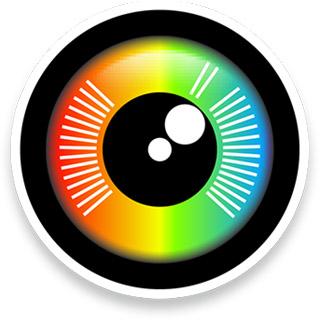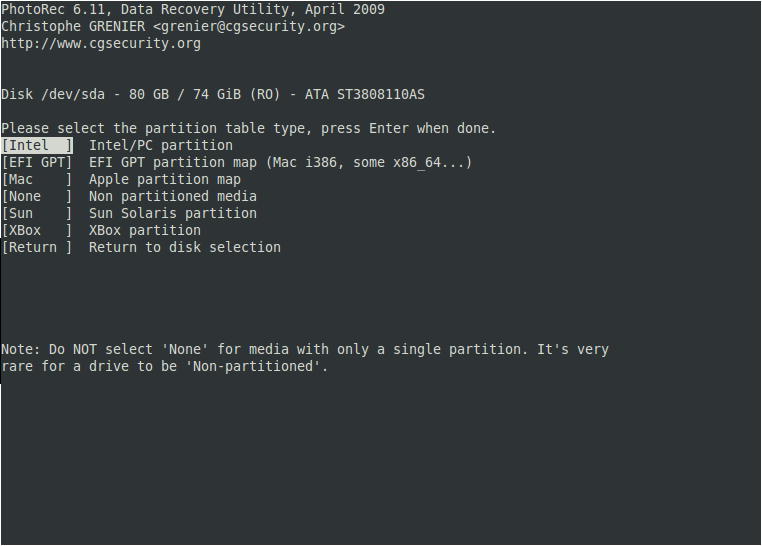PhotoRec is a recovery software that allows you to recover digital photos and images from your Windows PC and Mac. However, it has a few limitations that make it impossible to use it at all times. As an alternative to the program, you do have choices available that penetrate deep into the hard drive and assist you in the recovery of the files. Let us look at the best alternative to PhotoRec that is becoming the leading program for Mac and Windows.
PhotoRec is a free file recovery tool that is bundled with the TestDisk program. PhotoRec will scan a hard drive for deleted photos, videos, and audio files and automatically recover them to a. Nov 17, 2011 Download TestDisk y PhotoRec 6.13. Recover files and partitions from Terminal. TestDisk and PhotoRec are two open source, multiplatform applications that help you to recover lost partitions, restore the master boot sector of determined file systems, and recover lost files. But take note. Download free PhotoRec for PC/Mac alternative data recovery software. When you delete or lose important files, you can download PhotoRec alternative data recovery software to help you recover the deleted or lost files. Here, Do Your Data Recovery Free is the best PhotoRec alternative. It is free software which can help you. Download TestDisk y PhotoRec 6.13. Recover files and partitions from Terminal. TestDisk and PhotoRec are two open source, multiplatform applications that help you to recover lost partitions, restore the master boot sector of determined file systems, and recover lost files. But take note - neither TestDisk. PhotoRec, free and safe download. PhotoRec latest version: Free, simple photo retrieval with PhotoRec. PhotoRec is a free digital photo recovery tool that can restore lost images from computers, digit.
PhotoRec free download. PhotoRec is a computer program that allows users to recover lost or deleted data. Using PhotoRec can recover deleted data by the operating system, such as photos, videos, documents, music. That's when I decided to give PhotoRec, which came with the TestDisk download, a go. Initially probably averted because I thought it would do searches based only on signatures for picture files, which is not the case. As the other commenter pointed out, it runs in a console window which might scare off some less tech-savvy users.
sPart 1. The Best Alternative Software to PhotoRec for Mac and Windows
Provided the advantage of recovering data, it has become an act of necessity due to the several reasons that cause damage to the hard disk. The major factors are software tangle, corruption of the file system during a system update, a virus attack, and mishandling of the computer. Many programs offer the ability to recover data; nonetheless, not all prove beneficial under a valid circumstance. The reason is their failure to gain access to master boot record and sectors within the drive. iSkysoft Data Recovery for Mac (or iSkysoft Data Recovery for Windows) gives you the possibility, ease of handling, and the chance to get back the lost data irrespective of the reason for the loss.
The main aim of the program is to scan for entire sectors present within the hard disk and retrieve as much information as possible. Another advantage of the program is its ability to recover the files with original properties, names, and file paths. Such a step helps in getting back the photos that are trying to get back from the system in their original property and quality.
Why Choose This PhotoRec Mac and Windows Alternative Software:
- It has a single click button that allows you to start and stop a scan, making it easy to continue the process where you left off.
- You can save the information of a scan for a particular drive. If you do not have the time to proceed with the recovery, you can use the saved settings later to continue directly with the recovery.
- It has a file attribute system that calculates the percentage of good and bad sectors to recover the data. It will help you pick up good files over the bad, which automatically speeds the recovery procedure.
- You can search for files using the tree structure. If you remember the file or folder name, you can make the search directly using the same for faster results.
Step-by-Step Guide to Use PhotoRec Alternative Software
Step 1 Download PhotoRec Mac Alternative
You can download iSkysoft Data Recovery for Mac from the official site of iSkysoft. Drop the .exe file into the Applications folder to complete the installation, and start the program from the same folder. The program launches with its primary screen that shows you four recovery modes. Choose the file types that you want to recover and click 'Next'.
Step 2 Scan the Hard Drive
Photorec Software Download
The recovery mode analyzes deeply and assists in recovery of the data irrespective of the way you lost the data. Clicking the selection will open a new screen that will show you the list of the partitions contained on your Mac along with the size and the file systems. Press 'Refresh Drives' to see the partitions, if nothing the list is blank. From the list, highlight the volume of which you require recovery procedure. Press the 'Scan' button from the menu bar, to initiate the search process.
Step 3 Recover Photos from Mac
The software will run a scan and bring out the results in a few hours depending on the content. If you are exploring for a specific file format, use the file search option to scale down the scan time. After completion, it will display the results on the screen. In the window, you can click a file to view its content in the preview screen. With the aid of this option, you can pick the records that you want to retrieve. After checking the files, press 'Recover' from the menu bar, choose a location on an external storage device, and wait for the software to complete the process.
Step-by-Step Guide to Recover Lost Photos Using PhotoRec
Step 1. Install PhotoRec after downloading it from its original site. Start the software. If you are not using rooted Mac, then it will restart in sudo mode, and you have to enter the Mac password. The program will display the available media. Use arrow keys to select the drive containing the lost files.
Photorec For Windows
Step 2. Choose the files to recover. After selecting the partition and validating the data, the program requires information about data blocks. Use 'Other' if the file system is other than ext2/ext3/ext4 formats. The program can search for the files from the entire partition or the unallocated space. Choose either of them.
Step 3. Choose the location to save the recovered files. Wait for the program to complete the recovery process. After completion, the program will display the summary page. If you interrupt the process, the software will ask you to resume the process the next time you start the scan.
Shortcomings of PhotoRec:
- The command-prompt user-interface is difficult to handle and does not offer the ease of operation that a user expects.
- There is the absence of preview ability.
Part 3. Comparison of iSkysoft Data Recovery and PhotoRec
Software | One-click Operation | File Search | Deep Scan Search | Save Scan Information | Preview Ability |
|---|---|---|---|---|---|
iSkysoft Data Recovery for Mac | Yes | Yes | Yes | Yes | Yes |
PhotoRec | No | Yes | No | Yes | No |
The popular data recovery software TestDisk and its photo recovery pendant PhotoRec have both been released as version 7 yesterday.
TestDisk, available for Windows, Linux and Mac systems, is a powerful tool to recover lost partitions or files supporting numerous file systems.
PhotoRec, which ships with TestDisk distributions, recovers specific file types including many image formats but also archive and document formats.
Up until now, you had to run PhotoRec from the command line to scan for deleted files that you wanted to restore on a computer system.
The most recent version of the program ships with a graphical user interface which you can use instead for that.
The main advantage of the graphical user interface is that it makes things a tad easier as you don't have to navigate the available options on the command line anymore.
To get started, download the latest version of TestDisk & PhotoRec from the official website. If you are a Windows user, extract the contents of the archive afterwards on your system and run qphotorec_win.exe.
This launches the graphical user interface that you see on the screenshot above.


To recover photos or other supported file types now, do the following:
- Select the correct disk from the menu at the top. Note that drive letters are not shown by the program. Either use the size of the disk as an indicator or its label (PhysicalDrive0 is the first internal drive for instance).
- Select one of the available partitions from the list or pick whole disk if you want all of the disk scanned regardless of partition (and thus drive letters).
- Make sure the file system is correct. On Windows, this is usually FAT or NTFS.
- Select whether you want to scan unallocated space only (that is free space), or the whole partition / disk
- Set a destination folder for recovered files. Make sure it is not located on the same disk that is being processed by PhotoRec.
- If you want, click on File Formats to disable file types you don't want recovered. This may speed up the process.
- Once done, hit the search button and wait until the process completes.
The scan may take a while depending mostly on the size and speed of the disk. The program identifies file types using signatures which it compares to the beginning of each data block on the drive.
A technical explanation of how that is done in detail is provided on the official site.
Please note that the program works different when it comes to recovery than other programs of its kind. Instead of displaying found files that can be recovered first to the user, it writes all recoverable files automatically to the target location.
While that is not a big issue at times, it becomes an issue under certain circumstances. For instance, you need to make sure that the target directory has enough free disk space to store all files. Second, you will end up with lots of unrelated files that you don't have any interest in.
To mitigate the second issue, remove all file types that you are not interested in before the scan to exclude them from the recovery process. If you are only interested in images for instance, you may want to disable exe, dll and other unrelated file types to speed things up and reduce the disk space requirement for the operation.
If you are looking to restore individual files, you may want to use programs such as Disk Drill or Recuva instead.
Several additional improvements went into the PhotoRec update including about a dozen new file types and a reduction of false positives for about 80 file formats.
